Major Rivers of India
Rivers have played a significant role in all the great human civilizations of the world, whether it was Egyptian Civilization around the River Nile or Mesopotamian Civilization near the Tigris River. Rivers in India play an important role in India’s economy as India is an agriculture-dominated country. Nearly 70% population of India depends directly or indirectly on the river for their livelihood. In this article, we will cover Important Rivers of India, the total length of the main Rivers of India. Different ways in which Rivers in India are classified, and the origin and endpoint of major Rivers of India. Not only this but also we will cover the important tributaries of major rivers of India and the area through which they flow.
Rivers of India play an important role in irrigation, transportation, fishing. Their purpose is not only confined to agriculture, but they are tightly assimilated to Indian tradition and culture. Rivers in India are considered sacred and are even worshiped as God/Goddess. In India, almost every religious ritual is incomplete without the involvement of the river. India has a rich resource of rivers, and in nearly every part of India, there is a nearby river.
Qucik Navigate:
Classification of Rivers of India
- Perennial and Non- Perennial River.
- East flowing Vs. West flowing Rivers.
- Based on their origin.
Rivers classified as Perennial or non-perennial
If a river is originating from mountains or they get water throughout the year then they are considered as Perennial River. And if the river originates in the plateau region or they don’t have enough water throughout the year then they are regarded as the Non-perennial River. Almost all the rivers originating in the Himalayan Mountain region are perennial. Perennial rivers of India include Ganges River, Brahmaputra River, Indus River, Yamuna River and many more.
East flowing Vs. West flowing river
If a river in India falls into the Bay of Bengal, then it is the east-flowing river whereas if it empties into the Arabian Sea, then it is classified as a west-flowing river. Almost all the rivers of India are east-flowing rivers except few. The west-flowing rivers of India include the Narmada River, Tapti River, Mahi River, and Sabarmati River.
Based on their origin
In India, there are three primary sources from which rivers originate, and they are:
- The Himalayan mountain range.
- From Satpura and Vindhya range.
- From the Western Ghats region.
Inland Drainage River: Inland Drainage is drainage in which the river does not empty into the sea or ocean but ends up falling into a lake or water body surrounded by land. The best example of the Inland Drainage River in India is the Luni River which does not fall into the Arabian Sea but ends up in Rann of Kutch.
List of Major Rivers of India
Brahmaputra River
It is one of the longest rivers in India with a total length of 2900 km. It flows through Tibet and adjoining areas and enters India through Arunachal Pradesh. Brahmaputra River originates in Angsi Glacier in the Himalayas in Tibet and flows parallel to Himalayan Mountain Range. It is known by different names in different countries such as Yarlung Tsangpo River in Tibet, Dihang in Arunachal Pradesh, the Brahmaputra in Assam and Jamuna in Bangladesh. Finally, the river empties into the Bay of Bengal.
The Ganges
The Ganges is the most important and sacred river of India. In Indian culture, the Ganges River is regarded as Goddess. It is approximately 2528 km in length with most of it flowing through India. The Ganges has a paramount significance in the history and economy of India. Many major cities of India like Rishikesh, Haridwar, Kanpur, Allahabad, and Patna are situated on its banks. A large number of tributaries join the Ganges during its flow, thereby increasing its volume. Major tributaries of Ganges include Yamuna, Gomti, Ghagra, and Kosi. At Triveni Sangam in Allahabad, it joins the Yamuna, and it is a holy place for Hindus, and Kumbh Mela takes place hereafter every 12 years. The Ganges passes through the Indian state of Uttrakhand, Uttar Pradesh, Bihar, and West Bengal. From West Bengal, it enters Bangladesh where it is known as Padma River. The Sunderban Delta, formed by Ganges River, is the largest delta in the world.
Below Video: Video of Confluence of Bhagirathi River and Alaknanda River at Devprayag & Official beginning of Ganges River
Indus River
Indus River is another important river in India through a significant portion of it flows through Pakistan. It originates at Lake Mansarovar in Tibetian plateau and then runs through the Ladakh valley of India. After flowing through Gilgit-Baltistan, it finally enters into Pakistan. The river then starts flowing in the southern direction covering areas of Pakistan and eventually falls into the Arabian Sea. Indus river has a significant impact on Pakistan, and therefore Pakistan is also referred to as “Gift of Indus.”
Yamuna River
Yamuna River originates from Yamunotri Glacier in lower Himalayas and flows southwards entering into the Ganges basin. It is the second-largest tributary of Ganges River and joins the Ganges at Allahabad. The total length River Yamuna is 1376 km; it plays a significant role in the Indian Economy and ecosystem. Many important cites are situated on the banks of river Yamuna like Delhi and Agra. The Tons river is the largest tributary of Yamuna and Naini Bridge in Allahabad is built over Yamuna River.
Narmada River
The Narmada is an important river in central India, and it flows entirely in India. Narmada River is the fifth largest river in India, and the total length of the Narmada River is 1312 km. The Narmada originates from Amarkantak Hill in Madhya Pradesh, then it flows through the rift valley of Satpura and Vindhya and falls into the Gulf of Khambat in the Arabian Sea. It is one of the three west flowing rivers of India. In its course it passes through the states of Madhya Pradesh, Maharashtra and Gujrat and cities like Jabalpur, Hoshangabad, Vadodara lie on its banks. Famous Sardar Sarovar Dam is built on the Narmada River. Famous Dhuandhar Waterfall is formed by the Narmada River in Madhya Pradesh.
Godavari River
Godavari River is the most important river in peninsular India. In terms of length, it is the second-longest river in India, and the total length of the Godavari River is 1465 km. Godavari River is also known as Dakshin (South) Ganga. After originating in Trimbakeshwar, Maharashtra it flows eastwards towards the Eastern Ghats entering in the Indian state of Andhra Pradesh and finally empties into the Bay of Bengal. Nashik, Nanded, Warangal are important cities situated on its banks. Kumbh Mela at Nashik took place on the banks of river Godavari.
Mahanadi River
Mahanadi River flows through central and eastern India. It covers most states of Chhattisgarh and Orissa. It originates in Raipur District in Chattisgarh, and with a length of 858 km, it plays a significant role in transportation and economy. Hirakund Dam, the largest earthen dam of the world is built on Mahanadi River.
Krishna River
The source of Krishna River is at Mahabaleswar in Maharashtra. The length of the Krishna River is 1300 km making it the third-largest river in India after Ganga and Godavari. It flows through the Indian state of Maharashtra, Karnataka, Telangana, and Andhra Pradesh and then empties into the Bay of Bengal. Tungabhadra and Bhima are major tributaries, and Vijayawada is the largest city on its banks. Nagarjuna Sagar Dam, built across Krishna River is the world’s largest masonry dam and India’s largest dam in length.
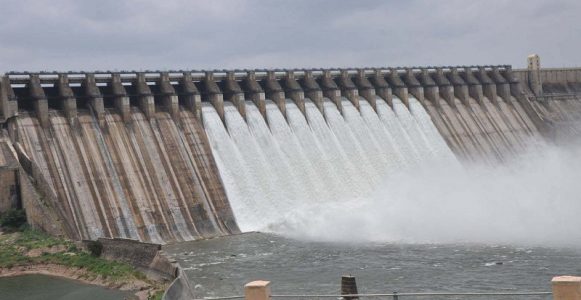
Kaveri River
Kaveri River prominently flows in the states of Karnataka and Tamil Nadu. It originates at Talakaveriwhich is located in the Western Ghats and flows eastwards until it falls into the Bay of Bengal, covering a distance of 765 km. Shivanasamudra Falls, Hogenakkal Falls are two beautiful waterfalls formed by the river during its course. Important cities situated on its banks are Thanjavur, Srirangapatna, and Erode. Mettur Dam on the Kaveri River is considered as the oldest dam in India constructed in 1934.
Above we have described the important Rivers of India and the basis of classification of Rivers in India. We have mentioned only nine important rivers of India, but there are many more rivers in India. Unlike the rivers mentioned above, they don’t fall into the sea but become tributary of a bigger river system. Now we will concentrate on major rivers of India which act as a tributary of the more significant river. We will discuss their source of origin, the complete length of the river, important cities, dams, and sites situated on their banks.
Read Also: Holy River of India: The Ganges River
List of Major Rivers of India between the lengths of 2000Km to 1000km
The Rivers falling in this category includes Yamuna, Narmada, Godavari, Krishna, Sutlej, and Ghaghara. We have covered all the rivers except two, i.e., River Sutlej and River Ghaghara, so we will concentrate on these two.
Read Also: Amazing Facts About Ganges River Every Indian Should Know
Ghaghara River
It is the largest tributary of River Ganges by the volume of water that contributed to the flow of River Ganges and the second-longest tributary in terms of length. Ghaghara River originates in Tibetan Plateau near Lake Mansarovar, and it is one of the perennial rivers of India as the river gets water throughout the year from the melting of ice. Ghaghara River is known as the Karnali River in Nepal, and it is the longest river in Nepal. From the source, the Ghaghara River flows through a distance of 1080 Km before joining River Ganges in Doriganj, Bihar.
Sutlej River
River Sutlej originates from Lake Rakshastal in Tibet, and the lake is near to Lake Mansarover, a famous Hindu Pilgrimage Site. Sutlej is the longest tributary of Indus River, and the confluence of both these rivers takes place at Mithankot in Punjab. The Famous Bhakra Dam is built on Satluj River in Bilaspur, Himachal Pradesh.
List of Major Rivers of India between the Length of 1000Km to 750Km
The Rivers of India falling in this category includes Chenab, Bhima, Son, Gomti, Chambal, Mahanadi, and Kaveri. We have already covered River Mahanadi and River Kaveri so we will concentrate on the rest of the rivers.
Chambal River
Chambal River is another major river in India as well as the largest tributary of River Yamuna. The Source of River Chambal River is Singar Chouri Peak in Vindhya Mountain Range in Indore district of Madhya Pradesh. The confluence of River Chambal and River Yamuna takes place in the Jalaun district of Uttar Pradesh, and during its entire course, it covers a total length of 960Km. According to Hindu Mythology, the river is known as Charmanwati and was cursed. It is believed that the cursed have helped the Chambal River as it is unpolluted by man. Chambal River is one of the most pollution-free rivers in India.
Ganges River Pollution: A Case Study
Gomti River
Gomti River is another important tributary of River Ganges, and before joining the Ganges, River Gomti covers a distance of 900 form its source. The river originates from Gomat Taal in Pilibhit, Uttar Pradesh and joins River Ganges at Kaithi in Varanasi. Lucknow, the capital of Uttar Pradesh, is a famous city situated on the banks of River Gomti. Famous Markandey Mahadeo Temple is situated at the confluence of River Ganges and River Gomti.
Chenab River
Chenab River is a Major River of India as well as an important River of Pakistan. The Source of Chenab River is Bara Lacha pass in Himachal Pradesh, and the length of the Chenab River is 960Km. Lahaul and Spiti Valley of Himachal Pradesh are situated on the banks of the Chenab River.
Bhima River
Bhima River is an important River of south India as well as the longest tributary of Krishna River. The source of Bhima River is in the Bhimashankar hills in the Western Ghats, and the river covers a length of 861Km before joining the Krishna River near Deosugur in Karnataka. The River is also known as Chandrabhaga River because at few places its shape of flow resembles the shape of the Moon. Pandharpur, an important pilgrimage site in Maharashtra, lies on the banks of Bhima River.
Son River
Son River is another important tributary of Ganges River, and the river originates in Amarkantak, Madhya Pradesh. Narmada River also originates from Amarkantak but both these rivers flow in the opposite direction. The Narmada flows westward and falls into the Arabian Sea whereas Son flows eastward and joins Ganges River at Arrah in Bihar. The length of the Son River is 784 Km, and it is a non-perennial river of India. Famous Nehru Setu and Jawahar Setu are built on the Son River in Bihar.
List of Major Rivers of India between the length of 750Km to 500Km
There are many rivers in India falling into this category. Here is the complete list of Rivers of India between the lengths of 750Km to 500Km.
| Name Of River | Source or Origin of River | End of River/River Joined | Total Length of River | Important Sites, Dams and Bridge on River |
|---|---|---|---|---|
| Jhelum River | Verinag spring in Pir Panjal Range in Anantnag district of Jammu & Kashmir | Joins Chenab River at Jhang District of Pakistan | 725 Km | Battle of the Hydaspes (Jhelum) was fought between Alexander and Porus on the Banks of River |
| Tapti River | Multai in Betul District of Madhya Pradesh | Gulf of Khambhat (Arabian Sea) | 724Km | City of Surat and Nepanagar (famous for newsprint paper mill) lies on its banks |
| Ravi River | Bara Bhangal in Kangra District of Himachal Pradesh | Joins Chenab River at Ahmadpur Sial in Pakistan | 720Km | City of Pathankot and Lahore lies on its banks |
| Koshi River | Formed by Seven small rivers called Sapt Kosi at Tribenighat, Nepal | Joins Ganges River at Kursela in Bihar | 720Km | Known as "Sorrow of Bihar" due to the destruction caused by River. |
| Gandaki / Narayani River | Nhubine Himal Glacier in the Mustang region of Nepal | Joins Ganges River at Sonepur in Bihar. | 630Km | The Kali Gandaki Gorge formed by river is the deepest canyon in the world. |
| Bagmati River | Originates in Shivapuri Hills after confluence of three headwater streams. | Joins Koshi River at Khagaria in Bihar | 597Km | Famous Temple of Pashupatinath and Kathmandu City is situated on its banks. |
| Penna River | Originates in Nandi Hills in Karnataka | Empties into Bay of Bengal at Utukuru in Nellore district of Andhra Pradesh | 597Km | Talakona Waterfall and Belum Caves are situated on the banks of River |
| Ramganga River | Originates from Namik Glacier in Pithoragarh district of Uttarakhand | Joins River Ganges at Ibrahimpur in Uttar Pradesh | 596Km | Corbett National Park is situated on the banks of River |
| Damodar River | Originates at Chandwa in Chota Nagpur Plateau, Jharkhand | Joins Hooghly River in West Bengal | 592Km | Known as "Sorrow of Bengal" due to the destruction caused by River. |
| Betwa River | Source lies in Raisen district in Vindhyachal Mountain Range | Joins River Yamuna at Hamirpur District of Uttar Pradesh | 590Km | City of Orchha lies on its banks. |
| Mahi River | Originates in Minda Village which lies in Vindhyachal Range in Madhya Pradesh | Empties into Gulf of Khambhat, Bharuch District of Gujarat | 580Km | City of Vadodara lies on the banks of Mahi River |
| Indravati River | Originates from Dandakaranya Range in Kalahandi, Odisha | Joins Godavari River at Somnoor Sangam in Maharashtra | 535Km | Famous Chitrakote Falls lies on Indravati River in Bastar District of Chattisgarh |
| Tungabhadra River | Start from Koodli where confluence of River Thunga and River Bhadra takes place | Joins Krishna River at Alampur in Telangana | 531KM | Hampi, a historical city of India lies on the banks of river |

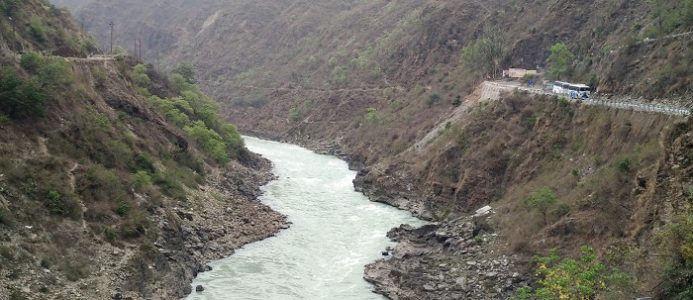
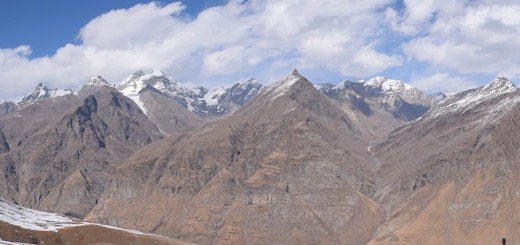
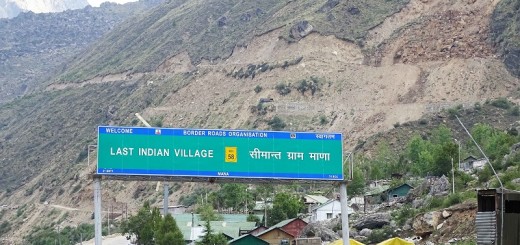
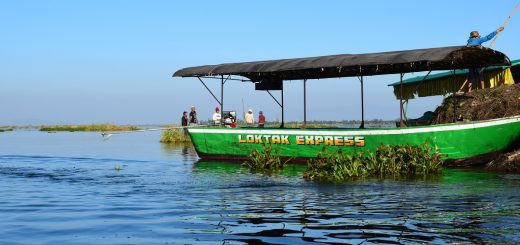

2 Responses
[…] Major Rivers of India – 2. The Ganges: Ganges is the most important and sacred river of India. In Indian culture it is treated as a goddess. It is approximately 2528 km in length with most … […]
[…] Major Rivers of India – Discovery Of Indian Nation – India has rich natural resource of rivers and most rivers of India play … Ganges is the most important and sacred river of India. … Hogenakkal Falls are two … […]